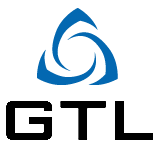Software
SimDAT™
Computational fluid dynamics (CFD) can be thought of as a numerical experiment. As these methods become more sophisticated, so too does the need to maximize the amount of useful data they can provide. Paired with substantial increases in computing power, modern CFD has been shown to accurately model complicated unsteady flow behavior arising in propulsion systems; however, even though it is easy to visualize unsteady flows with CFD, it is often difficult to quantify the key mechanisms causing the flow to be unsteady at the outset.
GTL’s Simulation Data Analysis Tool (SimDAT™) was specifically developed to maximize the amount of information available in CFD solutions about the root causes of unsteady flows experiencing resonating acoustic waves. This is often associated with combustion instability when this behavior arises in propulsion devices. SimDAT™ takes any unsteady CFD solution containing this type of spectral content, decomposes the solution into its constituent components those discrete frequencies, and quantifies the flow features leading to the driving or damping of those discrete frequencies. These results are both tabulated and mapped spatially; thus, maximizing the intuition granted to design engineers working towards developing stable systems.
SimDAT™ is not just for acoustics. From rockets to automobiles, oscillating flow fields are present everywhere. SimDAT™ can maximize the benefit of computational fluid dynamics whenever these flows occur.
For more information see: E. J. Jacob and J. W. Batterson, “Determining Sources of Unsteady Energy Transfer in Time-Accurate Computational Fluid Dynamics,” J. Propuls. Power, vol. 31, no. 1, pp. 332–341, Oct. 2015.

SimDAT™ Flow Chart

Unsteady Density

Acoustic Pressure
CFD provided by Purdue University. For more information see: M. E. Harvazinski, W. E. Anderson, and C. L. Merkle, “Analysis of Self-Excited Combustion Instabilities Using Two- and Three-Dimensional Simulations,” J. Propuls. Power, vol. 29, no. 2, pp. 396–409, Mar. 2013.

![GTL-logo-2color-[white] GTL Company](https://i0.wp.com/www.gtlcompany.com/wp-content/uploads/2018/10/GTL-logo-2color-white.png?fit=280%2C72&ssl=1)